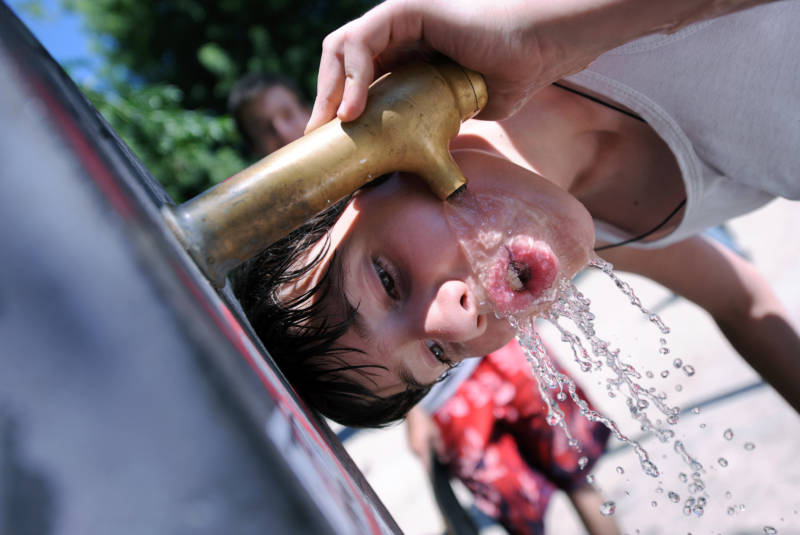In California we commonly debate how much water is used by agriculture, the environment, industry and urban users. We talk about water in terms of acre-feet and entire sectors. But we spend less time thinking about water on the individual level.
California’s water conservation mandate helped bring this back into focus, at least for a time. But the information on water usage provided by water utilities on our monthly bills is only a small part of how much water we really use.
If you want to get a better sense of your water usage there is an online tool, the Water Footprint Calculator, developed by GRACE Communications Foundation. The calculator walks you through how much water you use in your home and yard, but also how much is related to the energy you use, how much you drive, how much you shop, how much you recycle and the food you (and your pets) eat. If you take all those things into consideration, it turns out the average American consumes about 2,220 gallons (over 8,300 liters) of water per day.
“There has to at least be the first step with education and I think the California drought has really brought that home in terms of how much water goes into producing just about everything,” said Kai Olson-Sawyer, senior research and policy analyst at GRACE Communications Foundation. “We do have to think about these things. It’s the kind of stuff that shifts markets and makes producers take note.”
One of the biggest areas that impacts water usage is the food we eat, and meat tops the list. “It doesn’t matter whether that’s a water footprint or carbon footprint – it just takes a lot of resources [to produce meat],” he said. “There are studies lately, if you look at Meatless Monday, just taking one day off of eating meat can have a pretty significant impact. Obviously the less you eat, the greater the reduction in environmental impact.” His organization’s research has found that a pound of beef takes 1,800 gallons of water (over 6,800 liters) – this includes the water needed for the animal’s food (much of it corn and soy) and drinking, as well as cleaning and processing.
